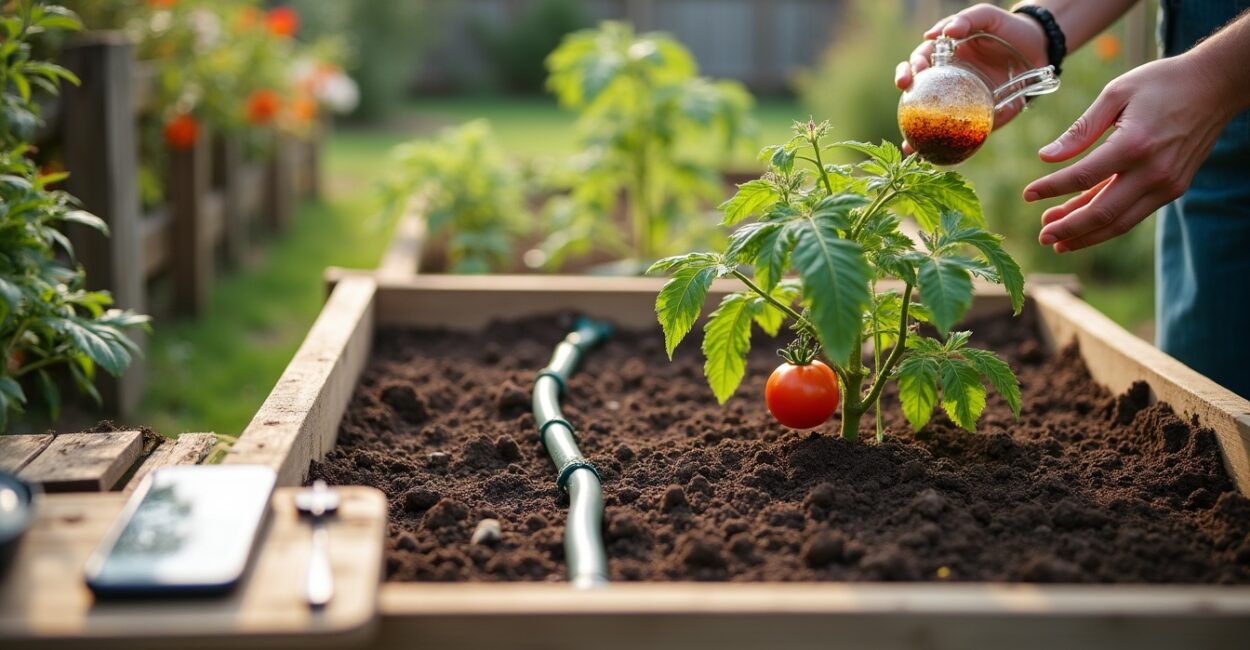Are your beds struggling despite your best intentions? garden care is more than watering and weeding—it’s about smart systems, seasonal timing, and soil life that make plants thrive. This article dives into actionable trends and practical tactics to revive your garden beds.
Discover 2025 garden care trends like drip irrigation and compost tea, why they matter now, and how to apply them from tomatoes to perennials. Expect clear steps, expert-backed tips, and mobile-friendly reading to help your outdoor space flourish.
You’ll learn proven methods, step-by-step actions, and the research-backed reasons these techniques work—so you can implement them quickly and confidently.
Smart Watering: Drip Irrigation and Targeted Moisture
Precision watering for healthier roots
Drip irrigation delivers consistent moisture directly to root zones, reducing evaporation and disease. It conserves water and boosts yields for vegetables and ornamentals alike.
Setting up basic drip systems
Use pressure regulators, emitters and timers for steady delivery. Group plants by water needs to avoid over- or under-watering neighboring beds.
Soil Life: Compost Tea, Microbes, and Organic Matter
Why living soil matters
Feed soil biology with compost tea, aged compost, and organic amendments. Healthy microbial communities improve nutrient uptake and suppress pathogens naturally.
How to brew and apply compost tea
Use quality compost, aerate for 24–48 hours, and apply as a drench or foliar feed. Repeat during peak growth for vigour and resilience.
- Use mature compost only.
- Aerate for 24–48 hours.
- Apply in early morning or evening.
Mulching and Bed Protection Techniques
Mulch types and their roles
Organic mulches moderate soil temperature, conserve moisture, and feed soil as they break down. Choose bark, straw, or leaf mulch by application.
Protecting beds from stress
Install temporary shade in heatwaves and row covers for frost protection. Mulch plus cover crops reduces erosion and seasonal stress.
Plant Selection and Polyculture for Resilient Beds
Design for diversity and resilience
Mix perennials, annuals and nitrogen-fixers to create balanced beds that deter pests and support pollinators. Diversity reduces failure risk.
Companion planting that actually helps
Pair deep-rooted and shallow-rooted plants to improve nutrient access. Use herbs and flowers to attract beneficial insects and control pests.
| Crop | Ideal Watering | Best Mulch |
|---|---|---|
| Tomatoes | Drip, 1–2x/day in heat | Straw or shredded bark |
| Leafy greens | Consistent moisture, frequent | Compost and leaf mulch |
| Perennials | Deep, infrequent | Bark or wood chips |
Low-Maintenance Tools and Tech for 2025
Affordable sensors and timers
Soil moisture sensors and smart timers make garden care precise and hands-off. They reduce waste and prevent overwatering across beds.
Integrate tech without complexity
Use simple smart valves and weather-based controllers for automatic adjustments. Start small and scale as you see gains in plant health.
- Install a mainline and attach emitters.
- Connect a timer or smart controller.
- Group emitters by plant water needs.
- Test each zone and adjust flow rates.
- Monitor soil moisture and tweak schedule.
Seasonal Timelines and Maintenance Rituals
Spring setup and early-season boosts
Prep beds with compost, test soil pH, and set irrigation before planting. Early compost tea applications help seedlings establish quickly.
Summer vigilance and fall transition
Monitor moisture during heat waves and gradually reduce water in fall. Mulch thicker before winter to protect crowns and roots.
Sustainability, Sources, and Expert Backing
Evidence and reputable guidance
Adopt practices supported by extension services and horticulture bodies. Trusted sources validate compost tea benefits and drip irrigation efficiency.
Where to learn more
Explore local extension resources and the Royal Horticultural Society for region-specific advice. Test changes on a small scale first.
Further reading: USDA irrigation guidance at USDA and advice from the Royal Horticultural Society.
Conclusion
Smart garden care blends targeted water, living soil, and diversity to create resilient, productive beds. Return to the initial question: by shifting to drip systems, compost tea, and intentional planting, your garden will reward you with healthier crops and less busywork.
FAQ
How often should I use compost tea in my beds?
Apply compost tea every 2–4 weeks during the growing season for best results. Use a well-aerated brew from mature compost to avoid pathogens. Apply as a soil drench at daybreak or dusk to protect beneficial microbes from UV stress. Monitor plant response and adjust frequency for seedlings versus established plants.
Is drip irrigation suitable for container gardens and raised beds?
Drip systems work excellently for containers and raised beds when calibrated for flow and frequency. Use smaller emitters and shorter run times for containers to prevent waterlogging. Group containers by similar water needs to simplify scheduling and conserve water while improving consistency.
Can mulch and compost tea replace synthetic fertilizers?
Mulch and compost tea can reduce reliance on synthetic fertilizers by improving nutrient cycling and microbial activity. They supply slow-release nutrients and enhance uptake, though heavy feeders may still need targeted amendments. Test soil periodically to track nutrient availability and adjust accordingly.
What are quick wins for maximizing tomato yields using garden care trends?
Combine drip irrigation for consistent root moisture, compost tea for microbial support, and mulch to retain soil moisture. Prune lower leaves to reduce disease, stake early for airflow, and maintain steady feeding. These focused steps boost fruit set and flavor without extensive labor.
How do I start if I have a small budget but big garden goals?
Begin with low-cost practices: build compost, apply generous mulch, and install a basic drip kit. Prioritise high-value plants and zone irrigation. Use free local extension resources for soil testing and guidance. Small investments, like a timer, deliver outsized benefits over a season.

